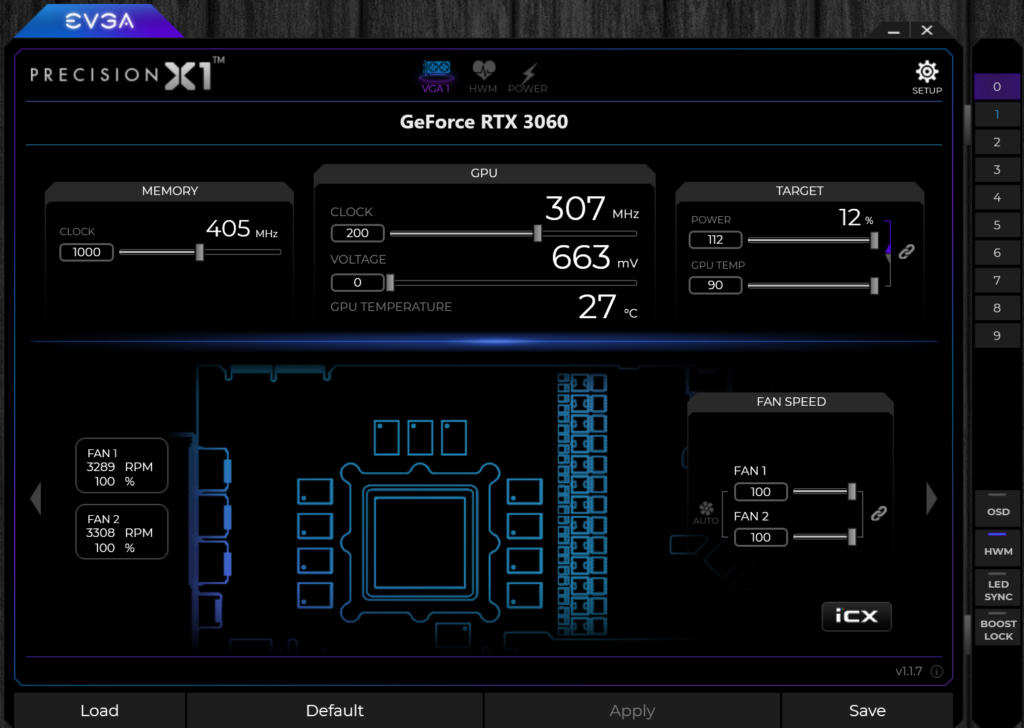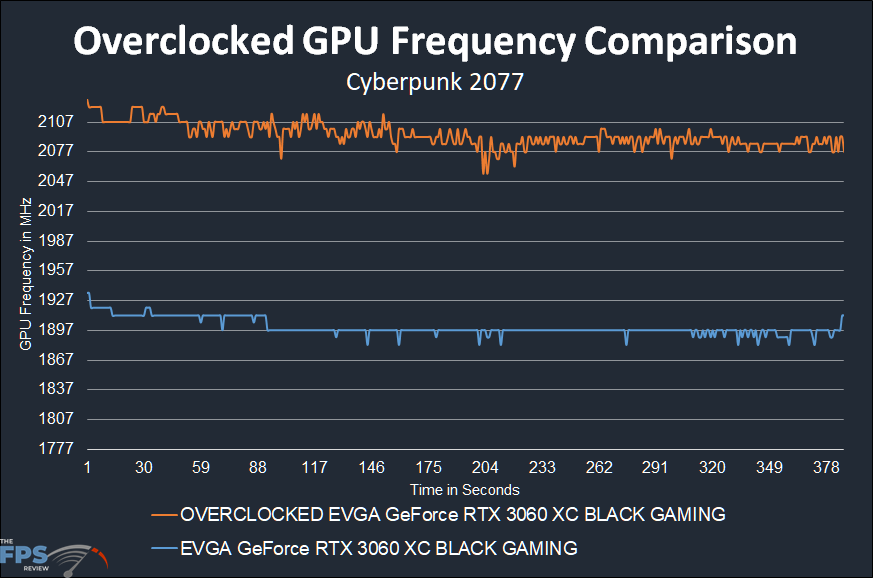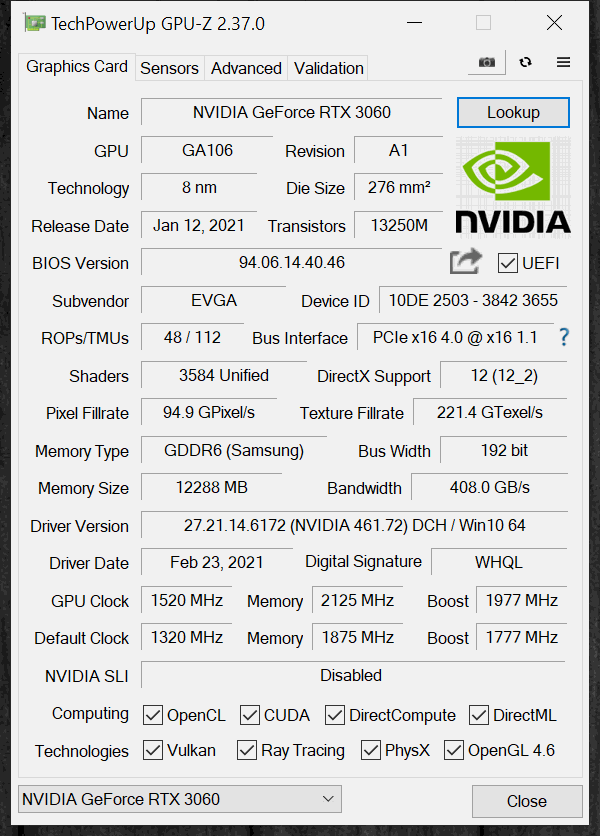
Introduction
On February 25th, NVIDIA launched its GeForce RTX 3060 GPU. Unique to this launch, there is no Founders Edition video card. Add-in-board partners and manufacturers will produce the video cards and set their own pricing. Though NVIDIA has a suggested retail price set at $329. We got hold of one of those retail cards, thanks to NVIDIA and EVGA, and we did a very thorough review of the EVGA GeForce RTX 3060 XC BLACK GAMING (part number 12G-P5-3655-KR) video card with 12GB GDDR6 and Dual-Fan.
EVGA has set the price for this video card at $329, keeping to the suggested price on its website. In our initial review, we did a deep dive into performance at 1080p and 1440p including Ray Tracing and DLSS. The one thing we did not do, was overclocking. Therefore, in this review, we will do that. This article will show you how to overclock the EVGA GeForce RTX 3060 XC BLACK GAMING video card, how high we could push it, and the performance advantages at 1080p, 1440p, Ray Tracing, and DLSS. We will use the exact same system and video card setup from the initial review to make our comparisons.
Default Specifications
Before we dive into overclocking, let’s do a little refresher of RTX 3060 specs, and the EVGA RTX 3060 XC BLACK GAMING specifically. he GeForce RTX 3060 is based on Samsung 8nm manufacturing process, same as all the other RTX 30 series GPUs. It has 28 SMs and 3584 CUDA Cores. It has 112 (3rd generation) Tensor Cores and 28 (2nd generation) RT Cores. It has 112 texture units and 48 ROPs. The GPU Boost Clock will be 1777MHz. It has 12GB of GDDR6 VRAM at 15GHz on a 192-bit bus which provides 360GB/s of memory bandwidth. The TGP is 170 Watts.
The EVGA GeForce RTX 3060 XC BLACK GAMING video card we have operates at the same reference 1777MHz boost and 15GHz memory frequencies. In our initial review, we looked at the real-world GPU Boost frequency while playing games. We found that GPU Boost exceeded 1777MHz and provided a clock speed averaging around 1897MHz. That’s 7% higher than the quoted boost clock. Therefore 1897MHz is our baseline for our overclocking today. Our goal is to see how much higher than 1897MHz average we can get it and sustain it.
Overclocking EVGA RTX 3060 XC Video Card
To start our overclocking process, there is no better program to use here than EVGA’s own Precision X1 software. It’s a robust piece of software that supports special functions on EVGA cards like ICX and many others. It’s the best way to ensure you are getting the highest and best stable overclock.

Firstly, you can see that we are able to increase the Power Target up 12% from 100 to 112%. That gives us a fair bit of headroom for overclocking. We are also able to separately control each fan, and we went ahead and put both at 100% fan speed to ensure the highest overclock. Note, the fans were not loud at all. Next up, we just had to increase the GPU Clock offset, and the memory offset. We do also have control over Voltage, but we found that raising it only hurt the overall TDP, and our overclock. GPU Boost manages Voltage anyways, and we found it best to just let it do its own thing automatically and manage it.
In our overclocking attempt, we found that we could set the GPU Offset to +200 and the memory to +1000. You’ll see below in the graph what this meant for the GPU Clock Speed. For the memory, it means that the memory is now running at 17GHz versus 15GHz. This boosts the memory bandwidth to 408GB/s versus the default of 360GB/s. The video card is mainly memory bandwidth starved, so pushing the memory as far as possible helps a lot. We tried to get it up to 17.5GHz or even 18GHz, but it just wasn’t having it, 17GHz was as far as we could push it.

This graph clearly shows what +200 offset to the GPU does, and how much higher it is over the default frequency. Remember, the quoted GPU Boost is 1777MHz, but GPU Boost actually runs the GPU at around 1897MHz by default. Our overclock adds quite a bit more to that. It starts off quite high at 2130MHz and quickly drops until it hits its stride upwards of 2077MHz-2092MHz. The actual average turns out to be 2094MHz. From 1897MHz that’s a 10% overclock or close to a 200MHz overclock. This video card overclocked very well.
In GPUz below you can see that at 100% fan speed the temperature was only 62c. Voltage remained at 1.0810V and board power is at 185.8W.


